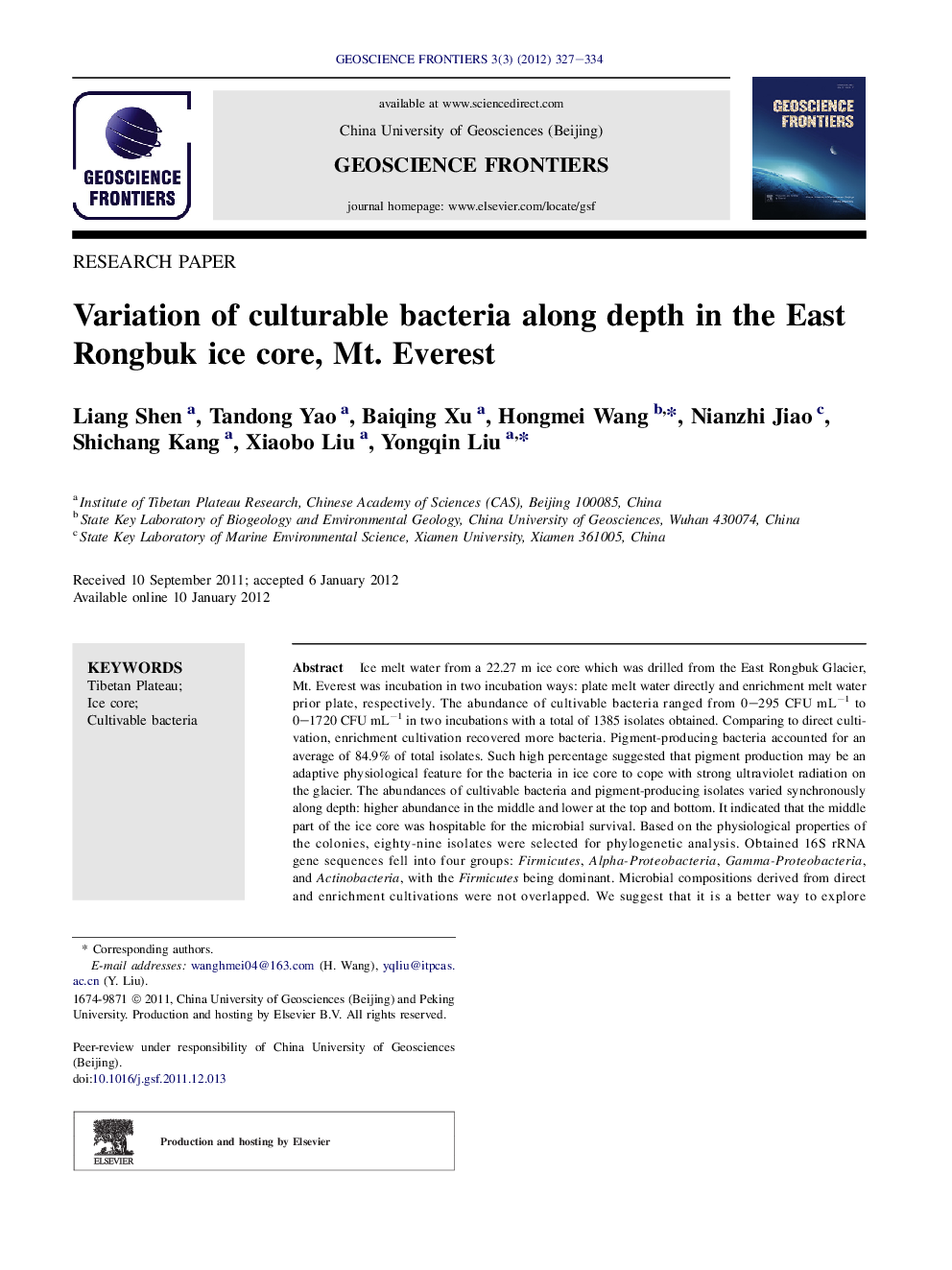| Article ID | Journal | Published Year | Pages | File Type |
|---|---|---|---|---|
| 4681825 | Geoscience Frontiers | 2012 | 8 Pages |
Ice melt water from a 22.27 m ice core which was drilled from the East Rongbuk Glacier, Mt. Everest was incubation in two incubation ways: plate melt water directly and enrichment melt water prior plate, respectively. The abundance of cultivable bacteria ranged from 0–295 CFU mL−1 to 0–1720 CFU mL−1 in two incubations with a total of 1385 isolates obtained. Comparing to direct cultivation, enrichment cultivation recovered more bacteria. Pigment-producing bacteria accounted for an average of 84.9% of total isolates. Such high percentage suggested that pigment production may be an adaptive physiological feature for the bacteria in ice core to cope with strong ultraviolet radiation on the glacier. The abundances of cultivable bacteria and pigment-producing isolates varied synchronously along depth: higher abundance in the middle and lower at the top and bottom. It indicated that the middle part of the ice core was hospitable for the microbial survival. Based on the physiological properties of the colonies, eighty-nine isolates were selected for phylogenetic analysis. Obtained 16S rRNA gene sequences fell into four groups: Firmicutes, Alpha-Proteobacteria, Gamma-Proteobacteria, and Actinobacteria, with the Firmicutes being dominant. Microbial compositions derived from direct and enrichment cultivations were not overlapped. We suggest that it is a better way to explore the culturable microbial diversity in ice core by combining the approaches of both direct and enrichment cultivation.
Graphical abstractFigure optionsDownload full-size imageDownload as PowerPoint slideHighlights► Culturable bacteria in the core belong to 12 genera and four groups. ► The abundance of cultivable bacteria and pigment-producing isolates vary synchronously with depth along the ice core. ► Our data suggest that the middle part was hospitable for the microbial survival.
